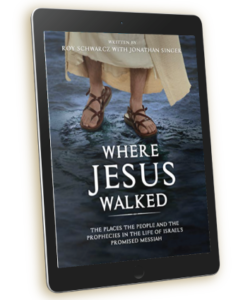29:1-4 In this section Moses describes the consecration of the priests for their service to God. The dedication of the tabernacle and the consecration of the priests occurred on the same day (vv. 12-15). Sin is pictured in Scripture as disease (Isa. 1:4-6), darkness (1 John 1:5-10), drowning (Ps. 130:1-4), and even death (Eph. 2:1, 5), but most often as dirt and defilement (Isa. 1:16, Jer. 4:14). When Aaron and his sons were washed (Lev. 8), it was a picture of their being cleansed so that they could now serve the Lord. The laver in the courtyard was for external cleansing as they went through the procedures of the sacrifices, but the picture here is spiritual cleansing for ministry. Nationally, all Israelites were called to be priests (Ex. 5:6), but the Kohanim were called to be priests to the priests. These instructions would not be carried out until the tabernacle is built (Lev. 8:1–9:24).
5-9 Moses clothed Aaron and his sons with the garments for ministry. These were the only garments to be worn before the Lord. Garments are a picture of the character and life of a believer. Today as priests we too are to lay aside the filthy garments of our old lives and don the “garments of salvation” provided by the Lord (Isa. 61:10; Eph. 4:22-24). Much later in Israel’s history, the prophet Zechariah looked forward to a time when the Lord would restore Israel and it included the garments of the high priest (Zach 2:10–3:5). The priests were also anointed with special oil. Instructions for making the fragrant anointing oil appear in 30:22-25. Oil is a picture of the Spirit of God in Scripture and signified a special calling for Kings, Priests and Prophets which is how scripture describes Believers today and who are anointed with God’s Spirit (Eph 1:13).
10-14 The priests had to be properly clothed spiritually in order to enter into God’s presence and the sacrifices provided the garments of righteousness before a holy God. A bull was slain as a sin offering (Lev. 4; 8:14-17) to atone for the sins of the priests. This sacrifice was repeated each day for a week (Ex. 29:36-37). This was not only for cleansing but also for sanctifying the altar. In the New Covenant we learn that Jesus is our sin offering and through Him we find forgiveness (Isa. 53:4-6; Matt. 26:28; 2 Cor. 5:21). The priests were wholly dedicated to God (Ex. 29:15-18; Lev. 8:18-21). Yeshua gave Himself fully not only in His ministry to Israel and by being a willing sacrifice of Himself on the cross.
15-21 Moses sprinkled the blood on the altar and on Aaron and his sons, along with the anointing oil, but also each man was marked with some of the blood on the right earlobe, right thumb, and right big toe. This was a token as a reminder that they must listen to God’s Word, do God’s work, and walk in God’s way. The priests laying their hands on the animal symbolized the transference of sin from them to the animal before it was killed (v. 15). While a bull had been sacrificed, only its blood and some fat portions were used for atonement (vv. 10-14). This time the first of the two rams was used, and all of it would be burned on the altar except for its blood, which was sprinkled on the altar on all sides. The blood of the bull was applied to the horns and base of the altar (v. 12), and the rest of the altar was ritually cleansed through the sprinkling of the sacrificial animal’s blood on its sides (v. 16). The ram was cut in pieces and its inner parts cleansed (v. 17) it was prepared as symbolic “food” for Yahweh. In most sacrifices parts of the animal were thrown away, parts were offered to The Lord by burning to ashes on the altar, and the rest were cooked and eaten by the worshipers and priests, who each got a share. In this case the entire animal was offered to The Lord by being burnt to ashes, so all the parts were placed on the altar, and nothing was thrown away or kept by the worshipers or priests (v. 18). In relating the offering Moses described God as “smelling” a sacrifice through its “pleasing aroma.” This does not mean that they thought God “inhaled” or that it was food as if God actually could get hungry. Rather it was a way of describing that the smoke of the sacrifice as it burned on the altar came up symbolically and was directed to Him. We are called to be “living sacrifices” surrendering our lives in obedience to Him and such behavior is pleasing to Him. Rom. 12:1 I appeal to you therefore, brothers, by the mercies of God, to present your bodies as a living sacrifice, holy and acceptable to God, which is your spiritual worship.
22-28 The priests were nourished by the offering physically with bread and meat. Portions from some of the offerings, as well as special tithes of the harvest, were part of the priests’ compensation for serving at the altar (Lev. 8:28-36). the peace offering (v 28) was an expression of joy and thanksgiving symbolizing the peace enjoyed after the sin and guilt offerings had been made and accepted by the Lord.
29-37 The high priest’s garments were to be passed down to succeeding generations. They were to be reused, not remade (29-30); this allowed continuity across generations. While the offerings were food for the priests, laymen were expressly forbidden to eat of these sacrifices or the bread that were part of the offerings (31-34); this prevented the sacrifices from becoming profane. The ones chosen to begin the priesthood could not enter into office without this seven-day installation ceremony which involved their washing, dressing, anointing, sacrificing, daubing, sprinkling with blood, and eating.
38-46 Details are given concerning the daily sacrifices and how they were to distinguish between morning and evening sacrifices (38-41) giving more instructions for the daily activity of the priests. The continual burnt offering (42) was a reminder and promise of the Lord’s intention to meet with the nation represented by the priests in the Tabernacle (42-44). The tabernacle expressed God’s intention through the exodus that He would dwell among them, (45). This of course is the reminder of the great future for Israel and the nations from Rev. 21:3-4 “And I heard a loud voice from the throne saying, “Behold, the dwelling place of God is with man. He will dwell with them, and they will be his people, and God himself will be with them as their God. He will wipe away every tear from their eyes, and death shall be no more, neither shall there be mourning, nor crying, nor pain anymore, for the former things have passed away.”


